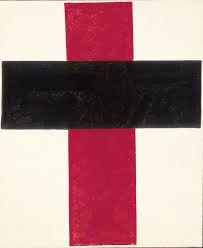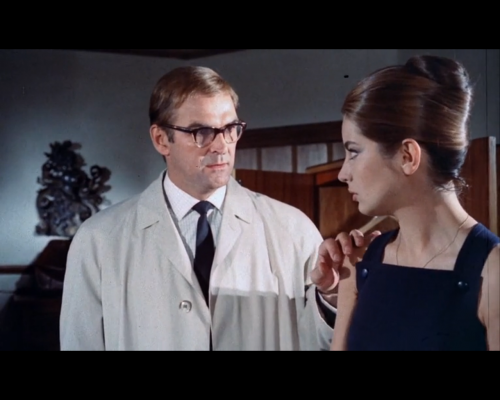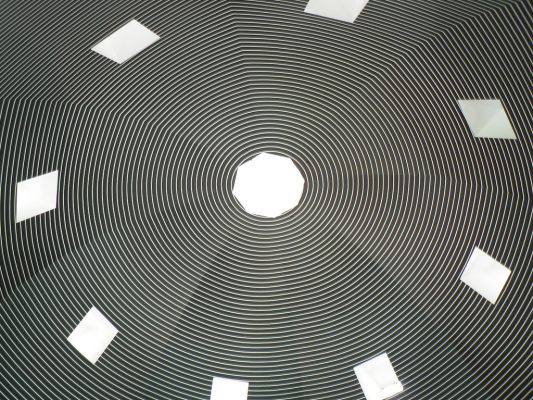‘A STRANGE NEW FISH EMITS A BLINDING GREEN LIGHT’, the article in National Geographic announced. Off the coast of Bermuda, an intrepid correspondent curled up inside a Bathysphere, a round steel chamber with a porthole, had been lowered by rope into depths where no man had gone before. His deep sea observations, appearing in the June 1931 issue, were followed by an account of another far-flung curiosity: the coronation of an African king. In November of the previous year, Ras Tafari Makonnen had been crowned His Imperial Majesty Haile Selassie I, Emperor of Ethiopia, King of Kings, Elect of God, and Conquering Lion of the Tribe of Judah in a spectacular weeklong celebration in Addis Ababa. In sixty-eight pages of text and colour photography, the magazine described how world leaders and monarchs, film crews, and chieftains in prickly lion-mane headdresses had converged from all directions onto the landlocked Christian kingdom, the last uncolonised territory in Africa. From Great Britain came the Duke of Gloucester, King George V’s son, bearing a traditional English coronation cake and a trunk full of ancient manuscripts once stolen from the country. From Italy came the Prince of Udine with the gift of an airplane; from America, President Hoover’s emissary came laden with an electric refrigerator, five hundred rose bushes, and a complete bound set of National Geographic.

share
‘The studded doors of the Holy of Holies open ponderously,’ narrated Addison E. Southard, the United States Consul General in Ethiopia, who was reporting on the ceremony for the magazine. The Conquering Lion and His Empress entered the Throne Room at dawn, suffused with a golden-red light. Forty-nine bishops in groups of seven had been reciting the Psalms for seven days and seven nights without ceasing, stationed in the seven corners of the Cathedral. Ras Tafari, who traces his lineage back to the union of King Solomon and the Queen of Sheba—in the Ethiopian version of the story, they sired a child—was anointed with seven oils, just as the priest Zadok once ordained his forebear. He was duly vested with the symbols of power: a jewelled sword, the imperial sceptre, an orb, a ring inlaid with diamonds, two gold filigree lances, the unfathomably long scarlet robes, and the crown, glistening with emeralds. ‘There is the fanfare of a thousand trumpets,’ Southard proclaimed. ‘The triumphant ululation of tens of thousands of waiting women is released in waves over the city of the “New Flower”.’ The National Geographic staff photographer W. Robert Moore, who had the privilege of an exclusive photo-shoot with the Emperor, observed, ‘The centuries seemed to have slipped suddenly backward into Biblical ritual.’
*
In the early 1950s, an anthropologist in the slums of Kingston, Jamaica noticed that men were preaching a new religion, carrying the Bible in one hand and a weathered copy of the June 1931 National Geographic in the other. In their sermons, they would read at length from Southard and Moore’s descriptions of Haile Selassie’s coronation. The reverends would pause at certain sentences to interpret and debate the meaning with their listeners, often dwelling on the Consul General’s line about how the princes of the earth ‘made obeisance on bended knee before the Emperor’. On an island still under British rule, where many lived in abjection and felt denigrated for their skin, the article was a revelation. In the 1920s, the Pan-African liberationist Marcus Garvey had famously predicted that a black king would be crowned in Africa, signalling that the day of redemption was near. The magazine was proof not only that the prophecy had come true, but that the leaders of the world had acknowledged it: King George’s own son had bowed to the black Messiah. One of the followers of the new religion, Brother Yendis, who was a teenager in Kingston in the fifties, remembered the moment when he became convinced that Ras Tafari is God: ‘A man come from Cuba and give me a book. And the book is a underwater book, Geographic book… Well in the middle of the Geographic book, it have the entire crowning of His Majesty. And when me read all them things, me get powerful, you know…’ Copies of the scripture were precious: ‘No bwoy can’t get them book fe buy you know.’
*
Accounts of Haile Selassie’s coronation in other publications had painted a vastly different scene from that of National Geographic. In Harper’s, the journalist Ellen La Motte—in a bad mood after a night spent in a renovated cowshed, besieged by ants—decried the poverty and filth of the country. Abyssinia was a cesspool where slavery flourished and nearly everyone had a venereal disease. There was no art or culture here, let alone any seraphic splendour, La Motte declared: ‘A primitive people like the Abyssinians, without genius, has created nothing.’ At the ceremony, there were a hundred chairs reserved for foreigners that went empty—the Ethiopians who had spent weeks walking barefoot across the country to reach the capitol were not permitted to sit in them. Time magazine wondered aloud whether Ras Tafari had poisoned his predecessor, Empress Zauditu, with ‘bad coffee’. Many newspapers reported that the Emperor had bankrupted his country to pay for the celebrations, levying tax after tax while crooked officials skimmed off the top. In one of the more florid sections of the National Geographic coverage, Southard described the majestic ‘review of the troops’ ritual, in which Ethiopia’s tribal chieftains and their warriors were given the chance to show off their military prowess in traditional costume. Harper’s reported that during the mock battle there appeared to be a mutiny: suddenly, combatants began to charge the stage, threatening Haile Selassie with sharpened spears, as the foreign guests overturned their chairs in fear and confusion. From the varied reports, it is clear that the press had little idea what was going on. But in keeping with its sensibility, National Geographic had focused on the wild beauty of the event, glossing over the rest: ‘How many elephants, how many lions, how many men…!’
For National Geographic, the diversity of the planet was glorious—so long as it remained at a distance, like a picture in a book. From its founding in 1888 through the 1940s, the National Geographic Society excluded blacks from membership, forbade them from using the library at their headquarters in Washington D.C., and enforced a whites-only policy at lectures. Haile Selassie, an enthusiastic member of the Society and avid collector of the magazine, was a rare exception to the rule. Yet the Emperor did not consider himself ‘black,’ and National Geographic concurred that he was ‘decidedly Semitic.’ The belief was that Ethiopians were the descendants of Noah’s son Shem, whereas ‘black’ Africans were descended from Ham, allegedly cursed in a notorious passage from Genesis often invoked to justify slavery. For the most part, the magazine avoided writing about America’s own black population, and published pieces that took stances against immigration and in support of the burgeoning eugenics movement. Its policy of printing photographs of topless African women—in the name of science—provided the first glimpse of a breast for generations of enthralled American schoolboys. In 1937, after Italy invaded Ethiopia, desecrated its land with poison gases, exiled Haile Selassie and killed hundreds of thousands, National Geographic published a glowing panegyric to Mussolini that congratulated the achievement, and proclaimed the rebirth of the Roman Empire. Its author was on safari with a new Lion: ‘As we lunched informally with Il Duce in a little Littoria restaurant, I learned upon what meat this modern Caesar feeds.’
*
A magazine that condoned racist policies and supported the wrong side in the war would inadvertently serve as foundational text in the apotheosis of a black man. ‘God is the grief of irony,’ wrote the philosopher Emil Cioran. The Rastafari religion, with disciples from New York to London to Japan, would attain the sort of global reach that would give National Geographic a thrill. Perhaps there is irony attendant at the birth of every god, but, searching in the dark waters of the past, we usually do not have enough light to see it. The nature magazine was not the only periodical that would serve as improbable scripture for the Rastafarians. In 1935, the Jamaica Times reprinted a piece of virulent Italian propaganda that had been circulating in European newspapers. It claimed that Haile Selassie had gathered together a secret confederation of twenty million blacks, with the goal of igniting a race war. The ‘black peril,’ which had vast resources of gold and counted all the black soldiers serving in Europe’s armies as members, called itself ‘Nyabinghi,’ or ‘Death to Whites.’ The article’s author, under the pseudonym ‘Frederico Philos,’ wrote, ‘Haile Selassie is regarded as a veritable messiah, a saviour to coloured people everywhere, the Emperor of the Negro Kingdom. Whenever one mentions the word ‘Negus’, the eyes of the blacks gleam with mad fanaticism. They worship him as an idol. He is their God. To die for the Negus is to ensure admission to paradise.’ The text attempted to muster support for the Italian mission to depose this dangerous demiurge. But for preachers such as Howell and their followers, the article was an uncanny, astoundingly public confirmation of their own beliefs. Instantly, everyone wanted to join the mysterious league. The appropriation of this second, unlikely text marked the creation of the first major branch within the Rastafari religion—the House of Nyabinghi.
God is, by nature, impervious to irony, whatever the circumstances of His birth. In the 1940s, in gratitude for the overwhelming outpouring of support by the African diaspora during Italy’s attack, Haile Selassie set aside a land grant of five hundred acres for anyone who wished to repatriate to Ethiopia. The territory, located in Shashamane, a fertile area in the Rift valley, initially received only a small number of settlers from the diaspora. But in the early 1960s, as the Rastafari religion grew and suffered increasing persecution, the Jamaican government began to pursue the idea of relocating the feared and loathed community. In 1961, the year before Jamaica gained independence, a state-sponsored delegation including three Rastas travelled to Ethiopia to meet the living God face-to-face. In the official mission report, the ‘Apostles of the Negus’, Mortimo Planno, D. Mack, and Filmore Alvaranga wrote: ‘Our meeting with H.I.M. Emperor Haile Selassie I is likened spiritually to the visit of the three wise men who journeyed from the West to the East to visit the Baby Jesus, bringing with them gold, frankincense and myrrh to offer H.I.M.’ Though he did not reproach his Magi, for his own part Haile Selassie rejected his divinity, and confided to his advisors his hope that they would find the true God—the one he venerated in the Ethiopian Orthodox Church. But in private, the Emperor would sometimes ask the palace secretary to read aloud the letters mailed to him from the Rastafarians, and he would listen, profoundly moved.
Repatriation proved an expensive and logistically difficult solution to the ‘Rasta problem’, and so in 1966 the Jamaican government pursued a new tactic: they invited Haile Selassie on his first official state visit, with the hope that he might publically eschew his godhood in front of the islanders. Rain poured from the sky as thousands gathered in waiting at Palisadoes Airport, singing hymns and passing around chalices of weed. When the Ethiopian Airlines plane broke through the clouds and touched down on earth, the sun followed, beaming onto the crowd. Some say Haile Selassie wept as he stood on the tarmac and surveyed the surging multitudes. Somehow, only the language of the gospels could capture the momentousness of the scene. As the Emperor, escorted by Mortimo Planno, was hurried into a car, people shouted, ‘Let we touch the hem of His garment!’ and, ‘Prepare a place for me in thy kingdom!’ The visit only fanned the flames of the island’s devotion—Rita Marley famously said she saw the stigmata in the Lion’s paw, and converted her husband Bob to the new religion—and the Emperor himself failed to comment on his divinity. In the years that followed, various organisations raised money for repatriation, and a stream of Rastas began to trickle in to Shashamane. But repatriation could just as well happen in the mind, wherever you were. In his handwritten history of the Rastafarians, The Earth Most Strangest Man, Mortimo Planno wrote,
Leave our home and family
to travel with the Lord of Love
Travel, travel travel travel
Travel with the Lord of Love.
*
In 1974, amid accusations that he had turned a blind eye to the thousands starving to death in Ethiopia’s famine, or worse—that he had hoarded the aid money—Haile Selassie was overthrown by a committee of military officers known as the Derg. Under the new leadership of Mengistu Haile Mariam, the territory of Shashamane was nationalised, and the Rastafarians, those leftover worshippers of the ancien régime, were persecuted, though they remained on the land. A year later, the newspapers reported that Haile Selassie had died, under mysterious conditions. No one could say where his body was buried. For the Rastafarians, this was a sign that the living God was not, could not be, dead. The Lion has gone into occultation, vanishing in a burst of flames. In footage shot in 2013 in Shashamane by the artists of Invernomuto, a man holds a magazine with a familiar, faded yellow cover. He flips to a page with a photograph showing thousands of people in white robes, waiting in the streets of the city as far as the eye can see. He reads aloud, ‘Well they say, “Blessed be the King of Israel.” Bless, barakat, you understand?’
When he returns to earth, the light of Ras Tafari will reach the shores of New Zealand first. In Ruatoria, a community of Maori Rastas has existed since the 1970s. The Dreads live in the shadow of Mt Hikurangi, their Zion, said to have once been a strange, gigantic fish pulled out of the ocean and left to petrify on the banks. Lying just west of the International Dateline, the mountain is thought to be the first place in the world to see the light of each new day. A member of the community, Ras Arama, told an interviewer how, when Haile Selassie returns, he will come from the East, with all his angels behind him, to restore the land once taken from the Maoris. All the powers of the earth will convene in this remote place for the second coronation. ‘All nations will be gathering on the mountain to see his light, eh, just like that, one day,’ Ras Arama prophesies. ‘They want to see his light hit here first; but that light might be too bright for them, eh? They’ll be looking to see the light, and next minute that light was Jah. The brightest light in there, that’s Him, that’s Him there, the brightest light. In one second, man, the world done, their wickedness gone… We’ll all be clean.’
share
ABOUT THE CONTRIBUTOR
Anna Della Subin
is writing a book about people who have been involuntarily turned into gods. Her essays have appeared in the London Review of Books, The New York Times and Harper's, among other publications. She is also a contributing editor at Bidoun.READ NEXT



